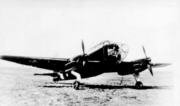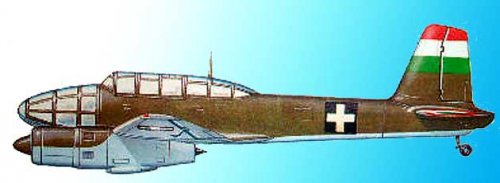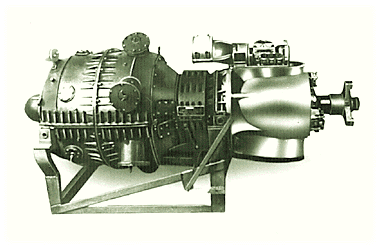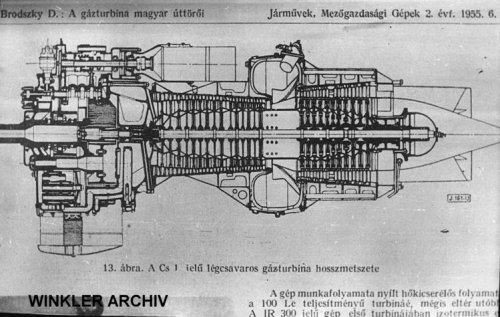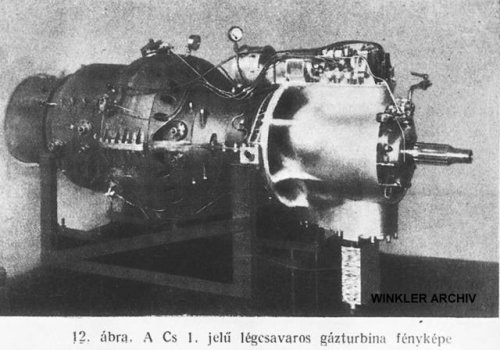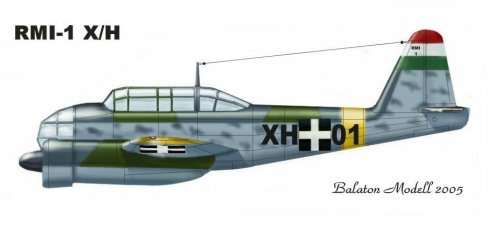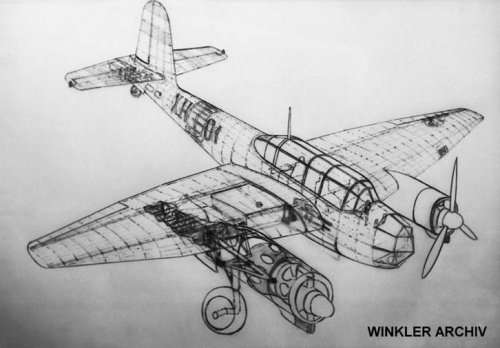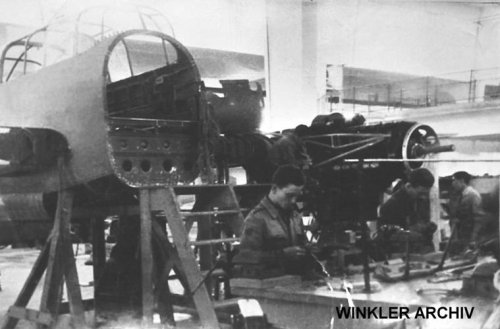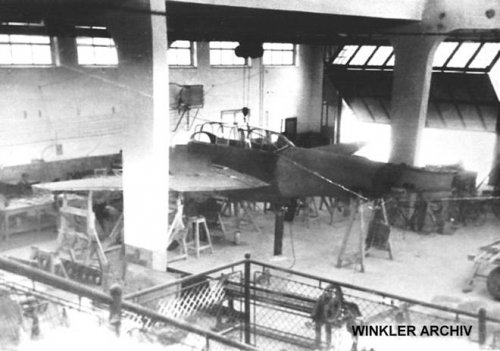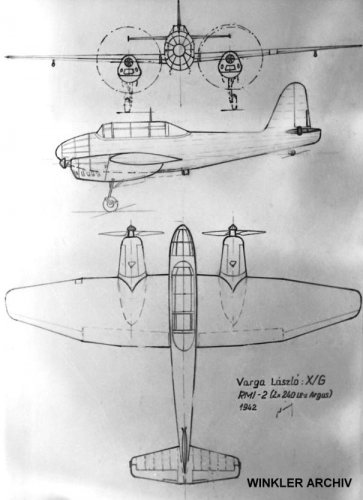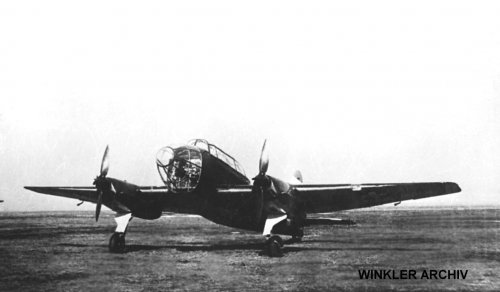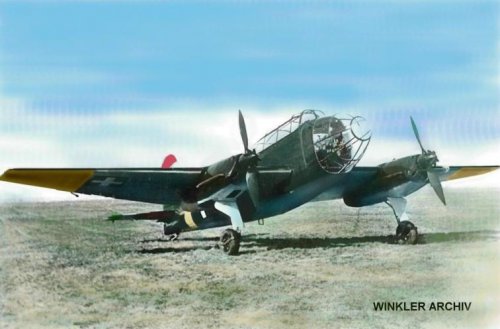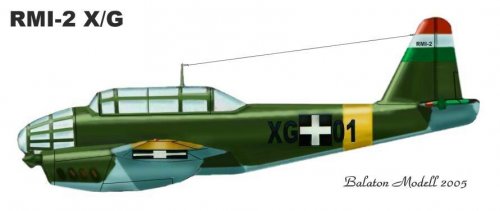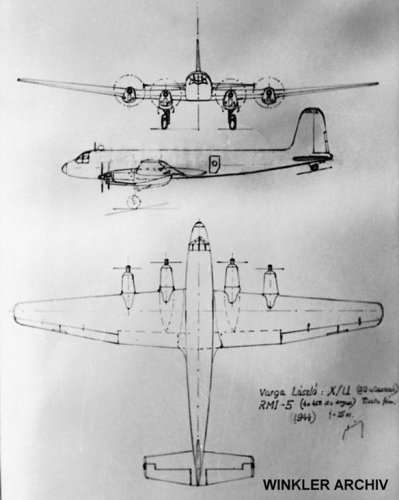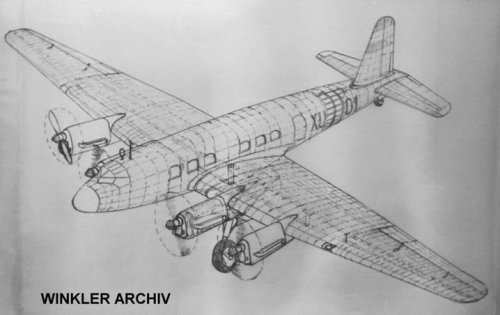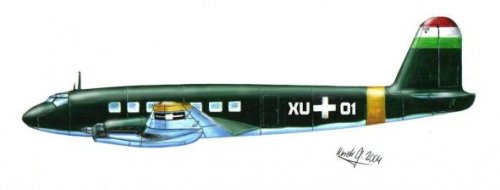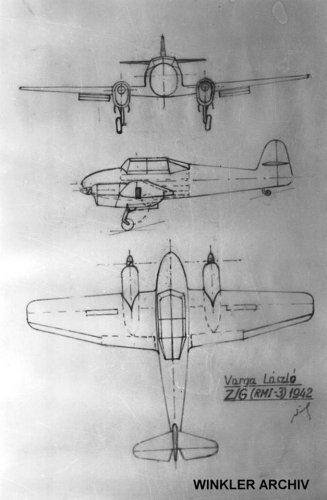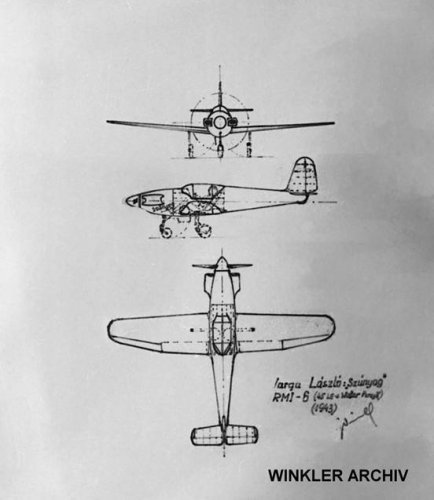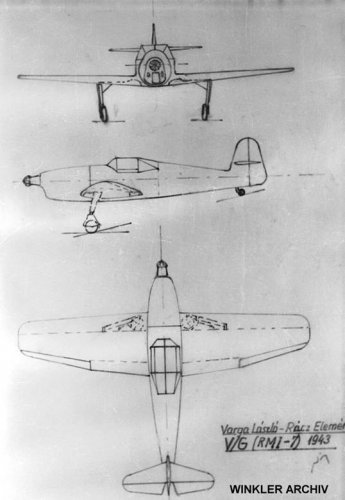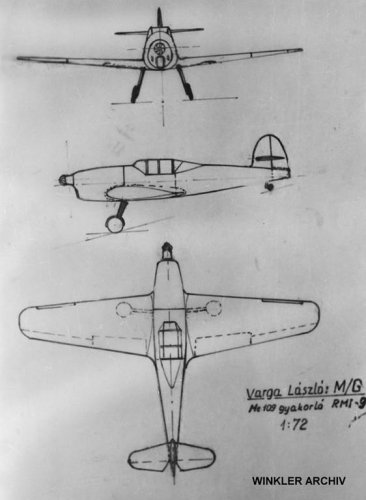You are using an out of date browser. It may not display this or other websites correctly.
You should upgrade or use an alternative browser.
You should upgrade or use an alternative browser.
Varga Aircraft & Projects
- Thread starter hesham
- Start date
- Joined
- 26 May 2006
- Messages
- 34,911
- Reaction score
- 15,786
- Joined
- 26 May 2006
- Messages
- 34,911
- Reaction score
- 15,786
Hi,
anther little known aircraft to that company;
RMI-9 two seat trainering aircarft for fighter pilots.
RMI-7 fighter/trainer aircraft.
RMI-2 two seat trainer instead of RMI-1 (X/H).
RMI-5 20 passenger transport aircraft.
RMI-8 twin boom fighter prototype (I am not sure about twin boom).
RMI-3 and RMI-4 light bomber/trainer aircraft.
anther little known aircraft to that company;
RMI-9 two seat trainering aircarft for fighter pilots.
RMI-7 fighter/trainer aircraft.
RMI-2 two seat trainer instead of RMI-1 (X/H).
RMI-5 20 passenger transport aircraft.
RMI-8 twin boom fighter prototype (I am not sure about twin boom).
RMI-3 and RMI-4 light bomber/trainer aircraft.
Tophe
ACCESS: Top Secret
As the RMI-1 design is dated 1940, do you know the date of the RMI-8?
And did you have a view making you guess a twin-boom layout? I am very interested... ;D
And did you have a view making you guess a twin-boom layout? I am very interested... ;D
- Joined
- 26 May 2006
- Messages
- 34,911
- Reaction score
- 15,786
My dear Tophe,
Sorry,I don't have the data for RMI-8,but from a friend in my
country tell me that it was actaully built as a prototype only
and it was a twin boom,and I have a special thing to you
please recieve my message.
Sorry,I don't have the data for RMI-8,but from a friend in my
country tell me that it was actaully built as a prototype only
and it was a twin boom,and I have a special thing to you
please recieve my message.
frank said:Is this the same Varga of the kitbuilt a/c, Kachina, that, IMHO, looks sort of like a scaled down, fixed gear T-34?
No relation beyond the common Hungarian origin just an odd coincidence.
The Kachina BTW wasn't a kit, it was a certificated production aircraft. Production ceased circa 1984 and the rights were sold off to another party, just as they had been purchased from Shin / Morissey before. The company is still around in the business of parts, instruments and engine overhaul. (I work for them<G>)
Tophe
ACCESS: Top Secret
Kachina has also a meaning out of the industial universe, see
http://en.wikipedia.org/wiki/Kachina

http://en.wikipedia.org/wiki/Kachina
Zizi6785
ACCESS: Secret
- Joined
- 20 December 2006
- Messages
- 358
- Reaction score
- 288
red admiral
ACCESS: Top Secret
- Joined
- 16 September 2006
- Messages
- 1,805
- Reaction score
- 2,377
Great pictures. Thanks especially for the cutaway of Jendrassik's turboprop.
Maveric
Fight for yor Right!
- Joined
- 14 January 2007
- Messages
- 2,231
- Reaction score
- 854
Really fantastic work. But there are some info´s I search for...
...any idea about the RMI 4?
Do you have a short history from the company Varga?
Are some technical data for this projects available?
Servus Maveric
...any idea about the RMI 4?
Do you have a short history from the company Varga?
Are some technical data for this projects available?
Servus Maveric
Zizi6785
ACCESS: Secret
- Joined
- 20 December 2006
- Messages
- 358
- Reaction score
- 288
Here is a link for technikal data (in just hungarian):
http://gportal.hu/gindex.php?pg=3083346&PHPSESSID=8c3983f8042240205373b48551fd3525
No data or any infos about RMI-4!
http://gportal.hu/gindex.php?pg=3083346&PHPSESSID=8c3983f8042240205373b48551fd3525
No data or any infos about RMI-4!
- Joined
- 6 September 2006
- Messages
- 4,834
- Reaction score
- 9,460
Thanks for these interesting 3-views and photos.
The Jendrassik turboprop photos were very interesting (I suppose it qualifies for the world's first?) and for a long time I thought the RMI-1 was a semi-fictional design.
What happened to the turboprop design? Did it fall into Soviet hands and did they further any development of it?
The Jendrassik turboprop photos were very interesting (I suppose it qualifies for the world's first?) and for a long time I thought the RMI-1 was a semi-fictional design.
What happened to the turboprop design? Did it fall into Soviet hands and did they further any development of it?
- Joined
- 1 February 2011
- Messages
- 2,939
- Reaction score
- 3,624
I've got two question regarding the Jendrassik CS-1 Engine and the Varga RMI-5 Aircraft.
Does the Turboprop engine considered a logical leap between the Piston Engines and the Jet Engines.
About the RMI-5. Could it be redesigned to become a bomber aircraft? Something of a Medium or Heavy Bomber?
My idea is that equipped with 4 CS-1 engines, a bomb load of 2-4000kg of bombs and 4-10 12.7mm Machine Guns and/or 20mm Cannons?
Does the Turboprop engine considered a logical leap between the Piston Engines and the Jet Engines.
About the RMI-5. Could it be redesigned to become a bomber aircraft? Something of a Medium or Heavy Bomber?
My idea is that equipped with 4 CS-1 engines, a bomb load of 2-4000kg of bombs and 4-10 12.7mm Machine Guns and/or 20mm Cannons?
- Joined
- 31 July 2013
- Messages
- 571
- Reaction score
- 1,182
I've gone through the above mentioned Hungarian site, and armed with my trusty Google translate combined with my limited knowledge of the English Language, I hopefully will shed more light on this amazing Hungarian company. First up is the RMI-2. Than this was planned to be a trainer variant for the the RMI-1, either for the CS-1 turboprop powered version, or the DB605 powered variant. The RMI-2 was to all purposes an identical airframe to its higher powered cousin, likewise using a mixed-structure (Wood-wings, steel-tube structure). Due to the work already carried out the prototype of the RMI-2 made its maiden flight in the summer of 1943, flown by Zoltán Zákány, test pilot from RKI (Flying Experiment Institute) from Saltovo Airport. Power for the RMI-2 came from a pair of Argus 411 engines producing 240hp each. Like many of the prototypes which I will be talking about from Varga, the RMI-2 was the victim of a USAAF bombing raid which completely destroyed the factory complex in 1944.
- Joined
- 31 July 2013
- Messages
- 571
- Reaction score
- 1,182
Next up is the RMI-3. This was designed as a bomber trainer, and was not armed, except for a small weight of training (probably 20kg) bombs. Work started on the RMI-3 in 1941, with power coming from a pair of Hirth HM-504/A2 air-cooled, inline engines producing 105hp each. Amongst the equipment fitted was a dive brake, which was extensively tested prior to flight at the Hungarian Institute of Aerotechnology. Like its forebears, it featured mixed construction with steel tubing on the fuselage, with wooden wings. All covering was plywood. The aircraft was believed to have flown as the only photo shows what looks like a 4-colour Hungarian camouflage (gray-green-dark-green-brown, light blue below). Again not confirmed is whether this was yet another prototype which was destroyed in the USAAF raid in 1944, but it seems likely.
Specifications:
Wingspan: 10 m
Length: 7.5 m
Height: 2.6 m
Construction weight: 900 kg
Take-off weight: 1350 kg
Maximum speed: 300 km / h
Range: 500 km
Flight altitude: 8000 m
This is the only picture available at the moment of the RMI-3.

Specifications:
Wingspan: 10 m
Length: 7.5 m
Height: 2.6 m
Construction weight: 900 kg
Take-off weight: 1350 kg
Maximum speed: 300 km / h
Range: 500 km
Flight altitude: 8000 m
This is the only picture available at the moment of the RMI-3.
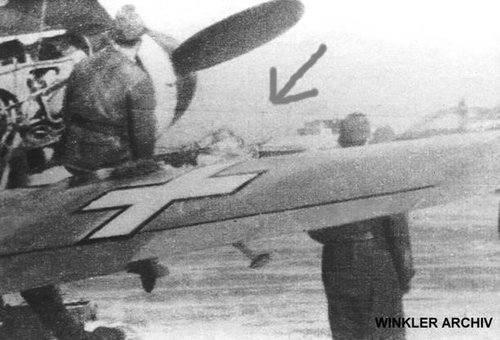
Last edited:
- Joined
- 31 July 2013
- Messages
- 571
- Reaction score
- 1,182
The RMI-4 seems to be a mystery. Whether this one was an intended development of the RMI-3 as could be inferred by Hesham's comment above has not been confirmed as yet.
- Joined
- 31 July 2013
- Messages
- 571
- Reaction score
- 1,182
Now the RMI-5 is an interesting beast, in that it was the first and so far the only 4-engine machine of Hungarian design. On the outside, it was modelled very much on the lines of the German Fw-200 Condor. And because of that to answer Tzoli's question, it would have probably met with similar problems if it had been put into a more militaristic role than transport. The reason for the RMI-5 dated back to 1941, when the Germans and Italians stopped the delivery of the transport aircraft to Hungary. Two of the requests at that time had been for examples of both Condors and further Ju-52s. This led to the Aeronautical Institute being entrusted with developing its own transport machine. Power for the new aircraft was to come from four Argus AS-411 powerplants, producing 480hp, examples which were manufactured at Waggon, Győr. Professor László Varga and his team set out to build a state-of-the-art, large-scale metal transport machine based on their experience of the earlier RMI designs. It was expected that the RMI-5 would have a passenger capacity of 20, only five short of the Fw 200 which had been expected to meet MALERT's (MALEV's ancestor's) vision. As previous designs, modelling and technological experimentation were carried out with the Hubert & Sigmund factory in Kőbánya carrying out tensile testing of the main fuselage and its structure. The metal shell wing was designed with a through-through main spar, the undercarriage was made with the well-known ring spring system, and fully retracted into the interior of the engine gondolas. Construction of the machine was advanced, and the core model was ready when the Ferihegy Experimental Workshop was bombed and destroyed in the 1944 USAAF raid.
Specifications:
Wingspan: 25 m
Length: 18.3 m
Height: 5.2 m
Construction weight: 5600 kg
Take-off weight: 9500 kg
Maximum speed: 320 km / h
Range: 1500 km
Flight altitude: 7000 m
Specifications:
Wingspan: 25 m
Length: 18.3 m
Height: 5.2 m
Construction weight: 5600 kg
Take-off weight: 9500 kg
Maximum speed: 320 km / h
Range: 1500 km
Flight altitude: 7000 m
- Joined
- 31 July 2013
- Messages
- 571
- Reaction score
- 1,182
The RMI-6 was to be a testbed aircraft for the tricycle undercarriage, which was to be fitted to the RMI-8 fighter of which more later. The RMI-6 was the first Hungarian tricycle undercarriage aircraft which featured a fully retractable system. Another system which was to be tested on the type was a fully reclined position for the pilot. In addition, instead of a joystick, it was equipped with a He-70 circular steering wheel ( a type license built in Hungary), which controlled the height by moving a horizontal tube projecting from the panel, much like moost modern light aircraft such as the Cessnas and Pipers. The history of the RMI-6 began in 1942 when with the addition of the USAAF 8th AF to bombing raids, the Hungarians realised the need for a fast bomber destroyer type, which was also very agile. To this end, the Hungarian Institute of Aeronautics commissioned a design for a small, heavily-armed, two-engine fighter. The RMI-8 was to feature a push-pull layout with 2 DB-605 engines. To assist with the design of the RMI-8 it was decided to build the RMI-6 Mosquito, which was specifically for the trial of the tricycle undercarriage arrangement, which had been chosen for the RMI-8. Construction of the RMI-6 began at the Institute of Aerotechnics and continued at the Ferihegy Workshop. Like many of the previous RMI designs, the RMI-6 featured a mixed structure of metal and wood. One of the features of the landing gear was the ability to be retracted or released by hand in a single motion. Taxiing tests were carried out in 1943 on the RMI-6, but it was found that there was a problem with the control system because it required too much force to operate manually, which went beyond the strict rule that the manual forces of mechanical actuators should never exceed the magnitude of the forces experienced on the handlebars. As far as is known, this was not solved by the time the prototype was destroyed in the USAAF bombing raid in 1944. Eyewitness accounts state that the machine was painted a brown-green (khaki) colour with with a national coloured stripe on the fuselage. It not given national markings and did not receive a registeration mark.
Specifications:
Wingspan: 6.6 m
Length: 5.8 m
Height: 2.2 m
Construction weight: 210 kg
Weight: 335 kg
Maximum speed: 250 km / h
Range: 300 km
Flight altitude: 3000 m
Engine: Persy II. 45 hp
Attached is the box art of a model kit of the type, just to show how it might have eventually appeared. Also a picture of the wreckage following the USAAF raid.


Specifications:
Wingspan: 6.6 m
Length: 5.8 m
Height: 2.2 m
Construction weight: 210 kg
Weight: 335 kg
Maximum speed: 250 km / h
Range: 300 km
Flight altitude: 3000 m
Engine: Persy II. 45 hp
Attached is the box art of a model kit of the type, just to show how it might have eventually appeared. Also a picture of the wreckage following the USAAF raid.
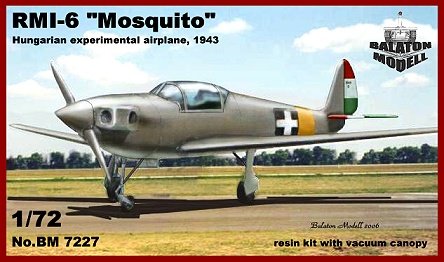
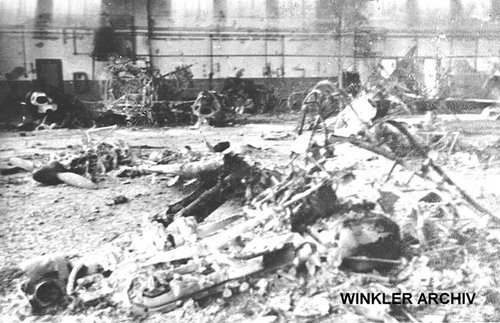
- Joined
- 31 July 2013
- Messages
- 571
- Reaction score
- 1,182
Next up is the RMI-7. Now my suspicion is that whatever the original plan was for the RMI-4, this progressed into the RMI-7, as the design for this programme began in parallel with the RMI-3. It featured the same body structure as the RMI-3, with power coming from an AS-410 engine, with the seating in a side-by-side configuration, and a fully retractable undercarriage. Wind tunnel and technology tests for the RMI-7 were also carried out at the same time as those for the RMI-3. It was planned for the RMI-7 to enter mass production at the Aerospace Factory Co. Mátyásföld site, which was the production facility for the Fábián András Levente training aircraft, which also saw service in the communications/liaison role in its Levente II variant. Like most of the previous RMI designs. the RMI-7 featured a metal fuselage and wooden wing structure. Following construction in 1944, the sole prototype was transported to Budaörs Airport for its maiden flight, however no further fate is known. It is probable that it was destroyed by one of the USAAF raids which took place during that year.
Specifications
Wingspan: 9,54 m
Length: 7,81 m
Height: 2,5 m
Construction weight: 1200 kg
Max take off weight: 1680 kg
Max speed: 360 km/h
Range: 1000 km
Max altitude: 8000 m
This picture show the RMI-7 under construction.

Specifications
Wingspan: 9,54 m
Length: 7,81 m
Height: 2,5 m
Construction weight: 1200 kg
Max take off weight: 1680 kg
Max speed: 360 km/h
Range: 1000 km
Max altitude: 8000 m
This picture show the RMI-7 under construction.
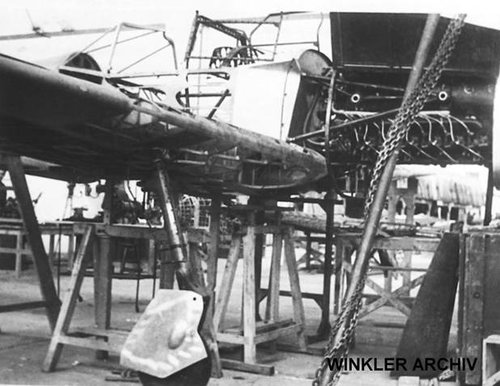
- Joined
- 31 July 2013
- Messages
- 571
- Reaction score
- 1,182
As previously mentioned, the RMI-6 was a test bed for the tricycle undercarriage which was to be fitted to the new heavy fighter for the Hungarian Air Force, the RMI-8. The RMI-8 was not only designed top take out the bombers, but was also expected to be agile enough to be able to take on any escorting fighters. To enable the RMI-8 to carry out these dual roles, armament consisted of two 8mm Gebauer machine guns in the fuselage, with two 30mm MK-108 cannons mounted in the wings by the boom attachments. To reduce the frontal area of a twin engined aircraft, it was decided to use a push-pull arrangement. So to speed up the development of the RMI-8, it was decided to take the existing Bf-109G, which was just entering service with the Hungarian Air Force in 1942. Although the prototype featured mixed wood/metal construction, it was expected that the production aircraft would be entirely of metal construction. The prototype was not completed when it was destroyed by one of the very attacks that it was built to defeat!
Specifications:
Wingspan: 11.8 m
Length: 10.2 m
Height: 3.5 m
Construction weight: 2850 kg
Take-off weight: 3800 kg
Maximum speed: 800 km / h
Range: 1000 km
Operating height: 11500 m
Here's a model box art to show what it could have looked like in service.

Specifications:
Wingspan: 11.8 m
Length: 10.2 m
Height: 3.5 m
Construction weight: 2850 kg
Take-off weight: 3800 kg
Maximum speed: 800 km / h
Range: 1000 km
Operating height: 11500 m
Here's a model box art to show what it could have looked like in service.
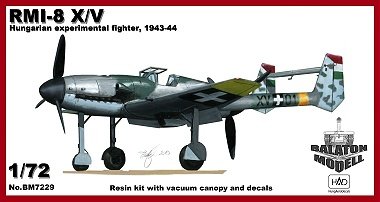
- Joined
- 31 July 2013
- Messages
- 571
- Reaction score
- 1,182
Last in the RMI types but no means least is the RMI-9. The RMI-9 was designed as a trainer to help pilots get used to the Bf 109, by utilising some of the components of that machine. From 1943, the Air Force had gradually received the then-advanced Bf-109 fighter planes (F and G versions), but it was not easy for pilots to get used to the narrow-track undercarriage and narrow cockpit. This was shown to be particularly problematic during take-offs and landings. By 1944, the Aeronautical Institute had designed the RMI-9 which utilised a Bf-109 seat, cockpit, and landing gear, but used a smaller capacity engine, specifically for training Messerschmitt pilots. Unfortunately, no photos have been left of the machine and like so many of prototypes from RMI, it was destroyed by a bombing in the experimental hangar in Ferihegy.
Specifications:
Wingspan: 9.5 m
Length: 7.2 m
Height: 2.3 m
Construction weight: 1100 kg
Weight: 1480 kg
Maximum speed: 350 km / h
Range: 700 km
Flight height: 9200 m
Engine: Argus As-411, 480 hp engine.
Specifications:
Wingspan: 9.5 m
Length: 7.2 m
Height: 2.3 m
Construction weight: 1100 kg
Weight: 1480 kg
Maximum speed: 350 km / h
Range: 700 km
Flight height: 9200 m
Engine: Argus As-411, 480 hp engine.
- Joined
- 31 July 2013
- Messages
- 571
- Reaction score
- 1,182
Thanks Apophenia, it was hard going at moments to be honest!!! Haven't come across anything on the RMI-10 as yet, but I will continue to dig. Have to do something whilst one is in self isolation!!Nice work VictorXL188. There are also cryptic mentions of an RMI-10 (or X/S) military transport glider project only.
- Joined
- 31 July 2013
- Messages
- 571
- Reaction score
- 1,182
It only took 14 minutes!! I think I have found the answer to the RMI-10 on the following website: http://gliders-fega.fw.hu/Aeroever.html
On there it talks about a glider designed by Ernő Rubik, the father of the man who brought us the Rubik's cube. The design is referred to as the R-21, and is described as a military transport glider. Construction of the R-21 prototype began, however it was never finished and was destroyed during the fights (presumably bombing raids such as those that destroyed most of the RMI prototypes). This glider had been designed to carry a payload of one-and-a-half tons. Hold fire realised this has already been posted!! Sorry!
On there it talks about a glider designed by Ernő Rubik, the father of the man who brought us the Rubik's cube. The design is referred to as the R-21, and is described as a military transport glider. Construction of the R-21 prototype began, however it was never finished and was destroyed during the fights (presumably bombing raids such as those that destroyed most of the RMI prototypes). This glider had been designed to carry a payload of one-and-a-half tons. Hold fire realised this has already been posted!! Sorry!
Last edited:


